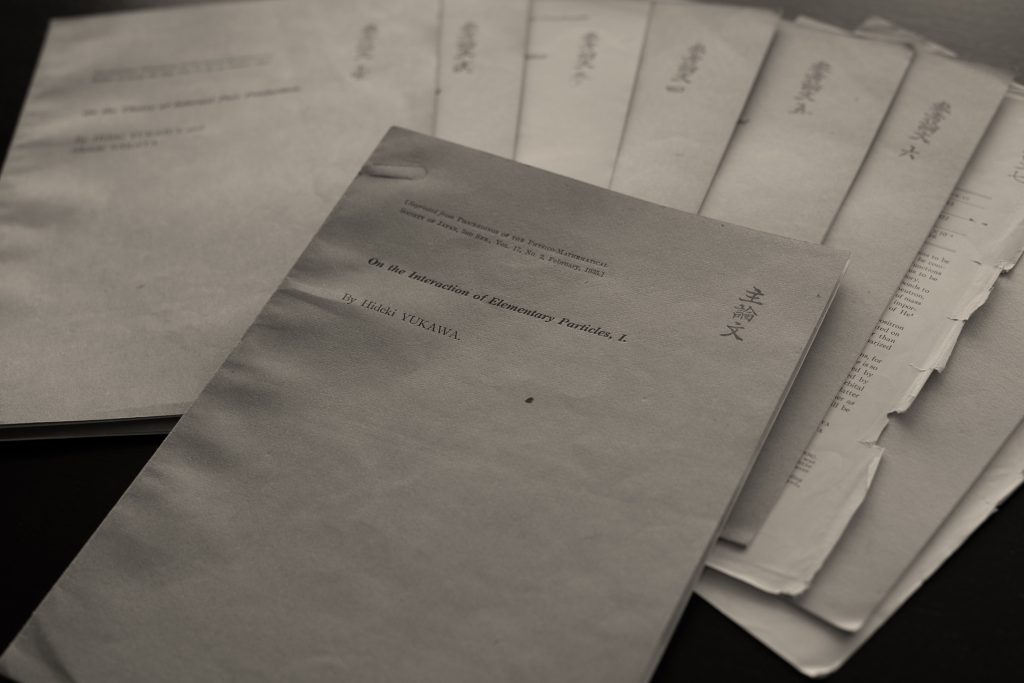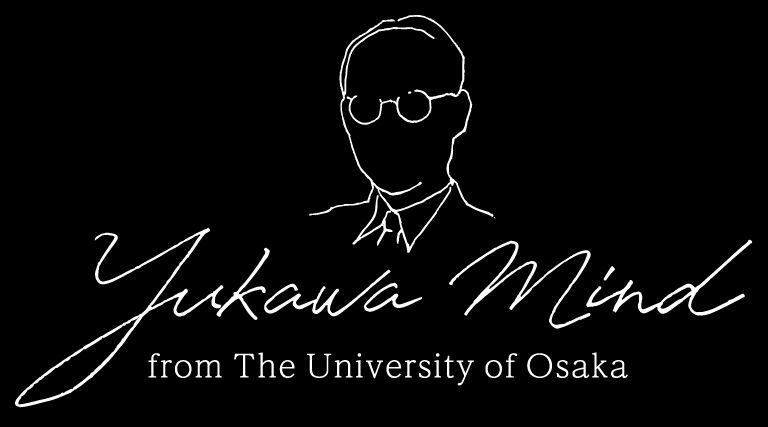Physics in the Yukawa era and the meson theory (6) Yukawa’s theory and its future effect
|
Rippling effects of Yukawa’s theory Yukawa’s theory of mesons is now known to be correct, but this theory was exposed to harsh criticisms immediately after the announcement. The biggest issue was that if Yukawa’s theory was correct, there should be mesons that have a mass of about 100 MeV; however, no such particles were found in the 1930s. Thus, Yukawa’s theory was criticized as an inconsistent theory constructed by assuming the existence of hypothetical particles that did not exist in nature just for the convenience of explaining the interaction. It was not possible to argue against those comments unless the mesons were discovered. Despite those criticisms, Yukawa continued to examine his own theory at Osaka Imperial University. Yukawa analyzed his first and subsequent papers together with his colleague, Shoichi Sakata, and others to figure out why the mesons could not be observed and what kind of experiment would be necessary to detect the mesons. He energetically improved the meson theory. Later, Yukawa described his research days at Osaka Imperial University as follows: “Looking back on my life, I was filled with inexplicable confidence when I concluded after scrutinizing the theory of nuclear force in the autumn of 1934 that the mesons exist. (Snip) An idea came up in my mind during the process of examining each problem with a sustained and somewhat extraordinary concentration. The idea then started to take shape and became clear. That made my confidence stronger. Then, I became more motivated to work harder to solve the problems.” By the way, Yukawa did not have a doctoral degree when he took the post of instructor at Osaka Imperial University. He obtained his Ph.D. in 1938, four years after he proposed the theory of mesons. In that year, Yukawa submitted his doctoral thesis summarizing his past research results, including the theory of mesons, to Osaka Imperial University and received his doctoral degree. All doctoral theses submitted to Osaka Imperial University and The University of Osaka, including Yukawa’s doctoral theses, are archived in The University of Osaka Main Library. Yukawa’s Ph.D. thesis is kept in the same condition as when it was submitted to the university in 1938, together with all other doctoral theses in the archive of the library. Yukawa’s Ph.D. thesis is posted on another page at our website. If you are interested, please read the page. |
Hideki Yukawa’s Ph.D. thesis (archived by The University of Osaka Main Library) |
|
|
The tradition pioneered by Yukawa Although Yukawa’s theory of mesons was criticized harshly in the beginning, it began to be accepted in the sphere of physics. In 1947, 10-odd years from Yukawa’s prediction, the mesons whose existence was predicted by Yukawa were finally found in the cosmic ray decay. Yukawa’s theory was proven correct. Yukawa received a Nobel Prize in Physics two years later in 1949. The shortness of the time from the discovery of the meson to the reception of the Nobel Prize suggests the magnitude of the impact the theory of mesons had. After the 1949 discovery of the meson, new particles akin to the mesons were discovered one after another during the 1960s. In the era when Yukawa proposed the meson theory, even the prediction of one type of particles received harsh criticisms. However, as physics continued to advance, it revealed that the mesons were just the tip of the iceberg. Such diversity of nature is obvious once you know it, but in the era when even the slightest signs of such things could not be observed or detected, it must have required a bold courage to publicly predict the existence of new particles as a result of logical thinking and it must have been the best part of studying theoretical physics in those years. In theoretical physics, it is important to conduct theoretical studies and take challenges at elucidating unknown physical phenomena. This basic approach and attitude in research have become firmly rooted as a tradition in our country thanks to Yukawa’s pioneering research activities. The search in the micro-world continued even after the 1960s, producing remarkable results. In the 1970s, the protons, neutrons and mesons were confirmed to be composite particles comprised of even smaller elementary particles called quarks. Many Japanese physicists such as Yoichiro Nambu contributed significantly to the advancement of elementary particle physics during this period. Their achievements were also the results of succeeding the tradition pioneered and established by Yukawa. Yukawa’s theory of mesons was revolutionary in that he paved the way for understanding the characteristics of the nuclei in detail. The research on the internal structure of the nuclei and the nuclear fission/reaction has been passed down and actively conducted at The University of Osaka. The “Yukawa Mind” that blossomed through the meson theory had great impact on The University of Osaka as well as on the country of Japan. The tradition established by Yukawa continues to be passed down from generation to generation at The University of Osaka. |
(Written by Masakiyo Kitazawa)






